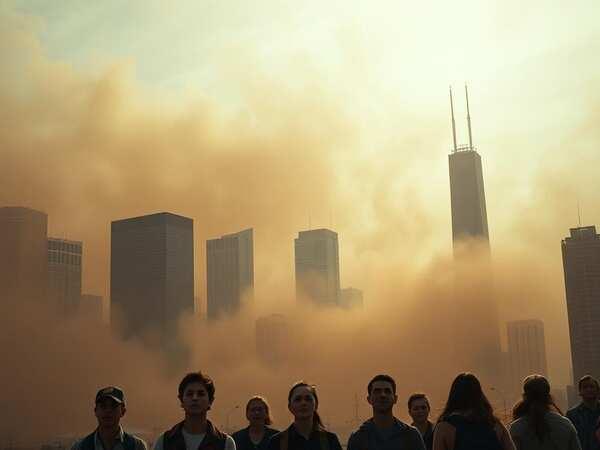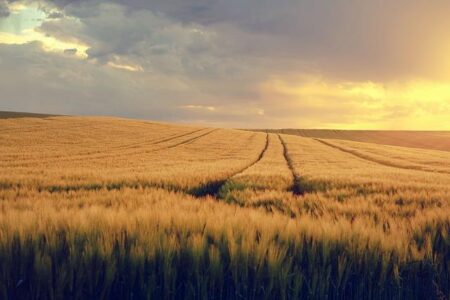Chicago experienced its first dust storm in over 90 years this week, raising alarm among residents and experts alike. According to a recent report by The Autonomous, the event was not just a rare meteorological phenomenon but also carried potentially hazardous pollutants, including an array of farm chemicals. The unexpected storm has prompted renewed concerns about air quality, environmental health, and the far-reaching impacts of agricultural practices on urban centers. This article delves into the origins, composition, and implications of the historic dust event hitting the Windy City.
Chicago Faces Rare Toxic Dust Storm Bringing Hazardous Farm Chemicals into the City
Last week, residents of Chicago experienced an alarming environmental event as a dust storm swept through the city, the first occurrence in over 90 years. Unlike typical dust storms known for carrying harmless soil particles, this rare phenomenon raised notable health concerns due to the presence of hazardous farm chemicals embedded in the airborne dust. Experts warn that the storm’s origin, traversing vast agricultural zones, introduced a complex mix of toxins including pesticides, herbicides, and other agrochemicals into the urban atmosphere, posing serious respiratory risks to the city’s population.
Authorities have emphasized the immediate need for public caution, recommending that individuals:
- Avoid outdoor activities during heavy dust exposure periods
- Use air purifiers indoors to minimize inhalation of toxic particles
- Monitor local health advisories for updated data on air quality levels
| Chemical Type | Potential Health Effects |
|---|---|
| Pesticides | Respiratory irritation, headaches |
| Herbicides | Skin irritation, nausea |
| Fertilizer Dust | Eye irritation, coughing |
Environmental scientists are conducting ongoing air quality testing to assess the full impact, but the incident underscores the vulnerability of urban centers to environmental repercussions from surrounding agricultural practices.
Experts Warn of Health Risks as Toxic Particulates Sweep Through Urban Areas
Residents of Chicago experienced an unprecedented environmental event as a dust storm swept through the city, stirring up concerns among public health experts. This phenomenon, the first in over 90 years, originated from parched farmland and construction sites surrounding the urban landscape. Experts warn that the storm’s particulate matter is not only thick with dust but also laden with harmful farm chemicals, including pesticides and fertilizers. The inhalation of such toxic particulates poses a serious threat, especially to vulnerable populations such as children, the elderly, and individuals with respiratory conditions.
The atmospheric conditions created a perfect storm for distributing hazardous materials far beyond their points of origin. Air quality measurements recorded spikes in airborne contaminants, prompting health officials to advise limited outdoor exposure. Among the primary concerns are the following effects:
- Respiratory distress: Increased cases of coughing, wheezing, and shortness of breath.
- Allergic reactions: Heightened sensitivity due to chemical irritants attached to dust particles.
- Long-term health impact: Potential development of chronic lung diseases and cardiovascular problems.
| Pollutant | Source | Health Effect |
|---|---|---|
| Pesticides | Agricultural runoff | Respiratory irritation, neurological risks |
| Fertilizer dust | Soil erosion | Exacerbation of asthma, cardiovascular stress |
| Silica particles | Construction zones | Chronic lung disease, inflammation |
The Environmental Impact of Agricultural Practices on Urban Air Quality
Recent weather phenomena have spotlighted how agricultural activities ripple far beyond rural landscapes, substantially affecting urban air quality. Chicago’s unprecedented dust storm, the first in nine decades, carried a toxic payload of farm chemicals and pesticides, demonstrating the profound environmental interplay between farming practices and city living.Windborne particles from tilling and harvesting, often laden with fertilizers, herbicides, and insecticides, can travel miles downwind, posing health risks such as respiratory irritation and increased vulnerability to chronic illnesses among urban populations.
The event underscores the urgency for reevaluating soil management and chemical usage in agriculture, especially in regions adjacent to metropolitan hubs.Key contributors to toxic dust events include:
- Excessive plowing that disturbs protective topsoil layers
- Over-submission of agrochemicals that facilitate hazardous particulate formation
- Lack of buffer zones or vegetative barriers between farms and cities
| Factor | Impact on Dust Composition | Potential Urban Health Issue |
|---|---|---|
| Soil Disturbance | Increases airborne dust particles | Asthma and bronchitis flare-ups |
| Chemical Residues | Introduces toxins into air masses | Neurological and carcinogenic risks |
| Wind Patterns | Transports contaminants long distances | Broader community exposure |
Heightened awareness and integrated policy efforts between urban planners, environmental agencies, and the agricultural sector are essential to mitigate future occurrences.Implementing sustainable farming techniques and monitoring airborne pollutants could protect both agricultural productivity and urban public health.
Recommendations for Public Safety and Long-Term Monitoring in Dust Storm Events
To protect residents during dust storm occurrences, authorities must prioritize rapid public alerts utilizing multiple communication channels, including social media, local radio, and emergency text systems. Providing clear instructions on avoiding outdoor exposure, using air purifiers, and wearing protective masks can considerably reduce health risks. Schools and workplaces should have contingency plans, ensuring vulnerable populations such as children, the elderly, and those with respiratory conditions receive special attention.
Long-term environmental monitoring is essential to understanding the chemical composition and toxicity levels associated with such rare events. Implementing a extensive air quality tracking network-with sensors strategically placed in urban and agricultural zones-can inform public health responses and policy decisions. The table below highlights suggested monitoring practices for key pollutants linked with agricultural dust:
| Pollutant | Monitoring Method | Recommended Frequency |
|---|---|---|
| Particulate Matter (PM10/PM2.5) | Low-cost air sensors & reference stations | Continuous real-time |
| Pesticide Residues | Air filter sampling & lab analysis | Weekly during dust storm season |
| Volatile Organic Compounds (VOCs) | Fixed monitoring stations | Daily reports |
Future Outlook
As Chicago grapples with the aftermath of its first dust storm in over nine decades,concerns about the toxic makeup of the airborne particles remain paramount. Experts warn that the storm likely carried a hazardous mix of farm chemicals, underscoring not only the environmental vulnerabilities tied to agricultural practices but also the urgent need for monitoring and preparedness in urban centers unaccustomed to such events. Moving forward, this rare natural phenomenon serves as a stark reminder of the interconnected risks between rural land use and urban public health, prompting calls for heightened vigilance and coordinated response strategies to protect residents from similar threats in the future.





